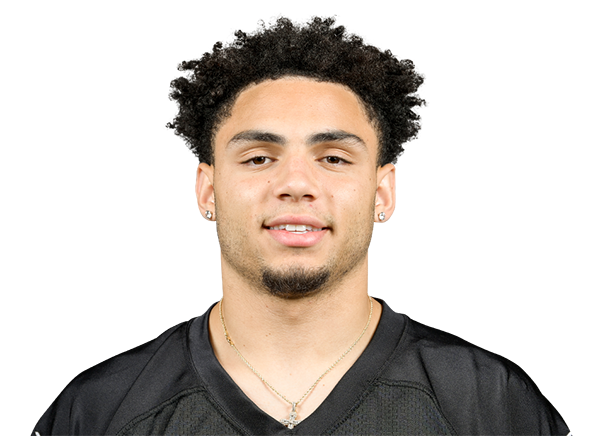In Defense of Jonathan Stewart
Last July I participated in a start-up dynasty draft and wound up selecting Panthers running back Jonathan Stewart in the fifth round, with the 46th overall pick. In a PPR league where we can start between two and four running backs, obtaining Stewart’s services for that price (he was the 15th ball carrier selected) seemed like a coup, especially considering his sterling 2011 campaign. With a fat new contract and the promise of an increased workload, as well as potential improvement from sophomore quarterback Cam Newton, it seemed like the sky was the limit for the talented fifth year back.
Unfortunately, Stewart’s season never really got off the ground, as he injured his ankle during a preseason clash with the Jets. This rendered him unable to participate in the remainder of training camp, causing him to miss the season opener against Tampa Bay. The effects of his impairment lingered, as he failed to compete in the third game of the year as well, and frequented the injury report for weeks on end with the “questionable” label.
Stewart ultimately plodded through the season until a second ankle injury, later defined as the dreaded high ankle sprain, knocked him out for the final five games of the year. He experienced career lows in every meaningful statistical category, finishing the season as the PPR RB50. In the “what have you done for me lately” world of fantasy football, Stewart quickly became a non-entity, worthy of nothing save for derision from scorned owners.
I, for one, have heard enough. Analogous to the old saying that a player can be “so underrated that he becomes overrated,” the vitriol towards Stewart has turned his once overinflated value into that of a dynasty bargain. I still have faith in the oft-criticized Carolina ball carrier, and will provide the reasons why below.
The Essentials
Despite the fact it seems like we’ve been debating Stewart’s fantasy viability since the dawn of the dinosaurs, he only turned 26 years old this past March. If you combine his age with his low career usage (817 carries and 98 receptions – 915 total touches), it’s not a stretch to believe Stewart could be a fantasy asset for the next five years. Because of this, Stewart can still be viewed with a long-term approach in mind.
Coupling with the above paragraph is the type of freak athleticism befitting a former first round pick. Despite entering the 2008 NFL Combine with a rocked-up 5’10”, 230 pound stature, Stewart nevertheless shamed his competition at the running back position. His numbers in the 40-yard dash (4.46 seconds, 82nd percentile), bench press (28 reps, 96th percentile), broad jump (128 inches, 96th percentile) and vertical leap (36.5 inches, 76th percentile) still represent one of the best all-around showings by a ball carrier ever.
A Statistical Analysis
|
*The entirety of this analysis utilizes standard WCOFF scoring
There are a few important things which can be gleaned from the table above. The first is that despite an injury-prone label, Stewart only missed two games in his career before last season. His injuries were of the fluke variety and he’s also undergone corrective procedures on both ankles this off-season. His health won’t be a concern entering 2013.
Secondly, despite poor statistical output in 2012, Stewart’s career yards-per-carry (YPC) stands at a robust 4.7. To put that into context, Adrian Peterson averages 5.0 YPC for his career, Chris Johnson sits at 4.7 YPC, Maurice Jones-Drew slides even lower at 4.6 YPC and Arian Foster is way down the list at 4.5 YPC. Dynasty football is a perennial venture – one bad season shouldn’t burn a player’s reputation for life.
Finally, if you’ve read my recent articles you’ve seen me reference players’ efficiency quite a bit – we need to do the same for Stewart. 2012 was a down year, as was a 2010 campaign which saw Stewart foray into the end zone only once. However, for his career, Stewart averages 0.82 PPR points per touch (PPT), which is a number reflective of a higher scoring fantasy ball carrier.
Efficiency Relative to the Elite
The following table breaks down how well Stewart has performed relative to the top 10 PPR running backs on a yearly basis:
| Year | Stewart PPT | Top 10 RB PPR Pts. | Top 10 RB Touches | Top 10 RB PPT | PPT Difference |
| 2008 | 0.82 | 2804.7 | 3347 | 0.84 | -2.40% |
| 2009 | 0.88 | 2889.3 | 3314 | 0.87 | 1.10% |
| 2010 | 0.61 | 2907.5 | 3214 | 0.9 | -47.50% |
| 2011 | 1.03 | 2765.9 | 3102 | 0.89 | 13.60% |
| 2012 | 0.71 | 2771.3 | 3324 | 0.83 | -16.90% |
| Average | 0.82 | 2827.7 | 3260.2 | 0.87 | -6.10% |
Both 2009 and 2011 saw Stewart perform at a rate more efficient than that of the aggregated top 10 PPR ball carriers. In fact, just two years ago Stewart averaged over 1.0 PPT, a feat which wasn’t replicated by any of the top 10 fantasy running backs. To put that figure in perspective, even during his transcendent 2012 season, Adrian Peterson averaged “only” 0.90 PPT.
Also, during his excellent rookie season in 2008, Stewart was a mere 2.4% off the pace of the fantasy studs. In three of his five years, Stewart has been a highly efficient running back – all told, despite poor performances in 2010 and 2012, Stewart’s efficiency is a mere 6.10% off the pace of fantasy’s elite. If you then consider his efficiency since Carolina’s Cam Newton-centric offensive shift, the news gets even better.
The Cam Newton Effect
Despite common perception, Stewart has actually performed better since quarterback Cam Newton’s insertion into the starting lineup. Compared to the top 10 PPR running backs, as well as his backfield mate DeAngelo Williams, Stewart’s two-year average is simply sublime.
| Name | PPR Pts. Since 2011 | Touches Since 2011 | PPT | Diff. |
| J. Stewart | 272.7 | 299 | 0.912 | – |
| D. Williams | 302.5 | 357 | 0.847 | 7.13% |
| Top 10 RB’s | 5537.2 | 6426 | 0.861 | 5.59% |
To reiterate this point one last time, Stewart’s 2012 season is not indicative of his skill level! Despite Newton’s role as touchdown vulture (22 rushing scores over the past two seasons), Stewart has still sports a two-year average of 0.912 PPT, which is 7.13% better than Williams’ output, and 5.59% higher than the top 10 PPR ball carriers. He’s hardly getting into the end zone, but his overall numbers have been better – why?
A Pronounced Increase in Passing Game Usage
During Stewart’s first three years in the league, he was on the receiving end of a lowly 34 passes. Since 2011, that number has spiked.
| Range | Games | Tgt. | TPG | Rec. | RPG | Rec. Yards | YPG | Fantasy Pts./Rec. | PPG/Rec. |
| 2008-2010 | 46 | 57 | 1.2 | 34 | 0.7 | 289 | 6.3 | 62.9 | 1.4 |
| 2011-2012 | 25 | 84 | 3.4 | 64 | 2.6 | 570 | 22.8 | 121 | 4.8 |
| % Change | – | – | 183% | – | 271% | – | 262% | – | 243% |
*Neglected receiving touchdowns, as Stewart only has four in his career
Since Newton began lining up under center, he’s looked in Stewart’s direction at an exponentially higher rate. Consider the bottom row of the table – on a per-game basis, Stewart received a 183% increase in targets, a 271% increase in receptions and a 262% increase in receiving yards. This resulted in an average of 4.8 points per game solely from the receiving game, a 243% increase on his early career statistics.
The Other Side
I’d be remiss if I didn’t mention the drawbacks surrounding Stewart’s situation. First, his ankle issues in 2012 are concerning. Due to his surgery, there are no guarantees he’ll be ready for the start of the 2013 training camp, which could once again lead to a full-blown running back by committee situation.
To that last point, since being drafted in 2008, Stewart hasn’t truly been utilized as a feature back. 2010 stands as his only season with more than 200 total touches, and for his career, Stewart only averages 12.9 touches per game. Very few players can put up RB1-level numbers with that type of sparse usage.
Finally, it’s no longer reasonable to expect Stewart to function as the team’s goal-line back. Newton’s rushing ability, combined with his size (6’5”, 245 pounds), makes him the optimal choice in scoring opportunities. If Newton isn’t called upon, fullback Mike Tolbert is likely next in line. Despite only being afforded 54 carries in 2012, Tolbert scored seven touchdowns, and is an efficient short-yardage specialist. These pitfalls have led to a noticeable shift in Stewart’s value.
ADP Tracking
Despite not playing since late November, Stewart has nonetheless seen a precipitous drop in his average draft position.
| Month | ADP | Round | Positional Rank |
| January | 54 | 5 | RB20 |
| February | 69 | 6 | RB23 |
| March | 70 | 6 | RB24 |
| April | 66 | 6 | RB25 |
| May | 73 | 7 | RB29 |
| June | 82 | 7 | RB30 |
This less-than-subtle shift has led to a drop-off of 28 spots, moving Stewart from a mid fifth round pick to a late seventh round selection. Relative to the running back position, Stewart fell ten spots, from a low-end RB2 to a middle of the road RB3. Recency bias and reactionary responses have now turned Stewart into a mid-round bargain.
Conclusion
Jonathan Stewart is inarguably one of dynasty’s biggest lightning rods. Due to a combination of injury concerns, recent performance and a crowded backfield, his value has taken a big hit in the past few months. In my opinion, none of this is warranted.
Even despite a mediocre 2012 season, Stewart still sports elite-level efficiency, and this number has only increased since Cam Newton won the starting quarterback job in 2011. Relative to the top ten PPR running backs, as well as fellow Panther DeAngelo Williams, Stewart is churning out fantasy points at a higher rate. Much of this is due to an increased involvement in the passing game, as Newton has looked to Stewart 3.4 times per game over the past two years. At just 26 years of age, there’s no reason Stewart can’t continue this pace for up to five more years.
Stewart likely won’t handle a full load in 2013, but better times lie ahead. Williams is 30 years old and isn’t guaranteed money beyond this year. The Panthers selected another ball carrier, Kenjon Barner, in the sixth round of this year’s draft, but he projects as more of a special teams player and potential third down back. Stewart could have the majority of snaps to himself as soon as 2014.
Because of this, as well as his recent drop in value, Stewart represents a great “buy” opportunity for forward thinking owners. He’s proven the ability to function as a mid-level PPR RB2 with limited touches, but is currently going a full tier lower. I expect him to bounce back in 2013, and potentially function as the Panthers’ lead back the following year. 2012 might have brought about some lean times for Stewart, but I believe his “Carolina Blues” are now a thing of the past.
Follow me on Twitter @EDH_27
[ad1]
- Dynasty Fantasy Football Mailbag: Jordan Love and Jordan Addison - April 22, 2025
- Forgotten Dynasty Veterans: Bottom Tier - April 21, 2025
- Dynasty Fantasy Football Mailbag: Malik Nabers and Isiah Pacheco - April 15, 2025

























































